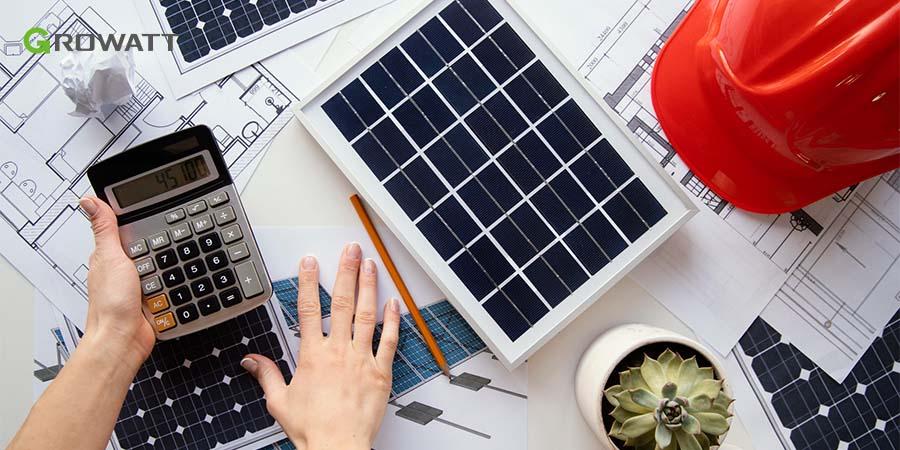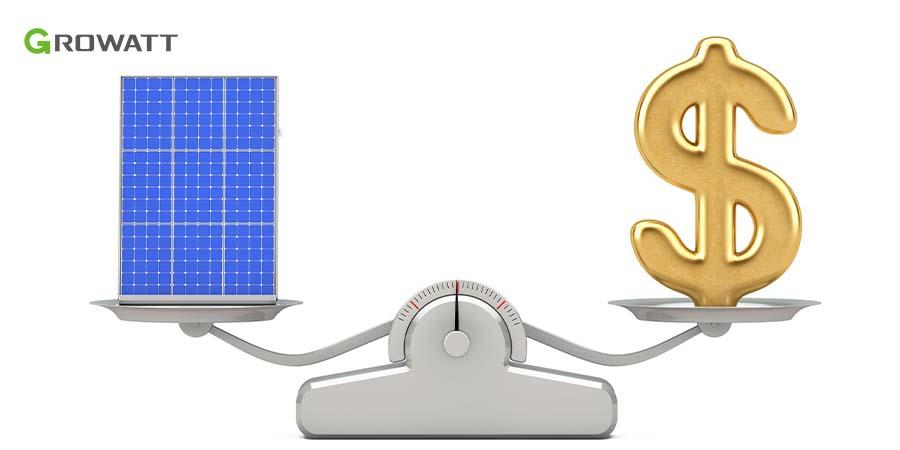Without question, solar energy is revolutionizing the field of renewable energy. In the long term, using solar energy to produce clean electricity is beneficial from both an environmental and financial standpoint.
The price of solar inverters, however, is one factor that frequently confuses prospective solar users. In order to transform the direct current (DC) produced by solar panels into useable alternating current (AC) power, solar inverters are essential.
Despite the obvious advantages of solar energy, many people may be discouraged from adopting this technology due to the high cost of solar inverters.
We will examine the elements that contribute to the high cost of solar inverters in this extensive guide.
When thinking about a solar energy system for your house or place of business, you can make well-informed selections if you are aware of the nuances that go into the cost.
We’ll go over everything, including the technology behind solar inverters, the many kinds that are out there, how reliable they are, and how to choose these crucial parts of a solar energy system at a reasonable price.
The Solar Inverter Technology
Let’s first review the technology underlying solar inverters before getting into the pricing. The main components of a photovoltaic (PV) system, solar inverters, are in charge of converting the DC power produced by solar panels into AC electricity. String inverters and microinverters are the two main categories of solar inverters.
The most popular kind, string inverters, are usually seen in conventional solar setups. They create AC electricity by connecting several solar panels in series and converting the total DC output.
On the other hand, microinverters are affixed to specific panels and perform DC to AC-conversion at the panel level.
Because of its intricacy, this conversion process from high-voltage DC to grid-compatible AC calls for sophisticated circuitry and electronics.
Sophisticated technology is also required for the solar inverter to handle power fluctuations, maintain grid synchronization, and assure safety. The development and integration of this technology into the inverter raises the overall cost.
Solar Inverter Efficiency
Efficiency is one of the main determinants of solar inverter cost. The effectiveness of solar inverters in converting DC to AC electricity determines their rating.
A greater proportion of the DC power produced by your solar panels may be converted into useful AC electricity by inverters with higher efficiency.
Higher-efficiency inverters are often more expensive, but they may end up being a prudent investment over time. Your solar panels will generate more power, and you will save more energy if your inverter is more efficient.
As a result, the savings and improved energy output throughout the solar system’s lifetime may outweigh the initial cost.
Efficiency is also very important for the lifetime and general performance of your solar system. Because an efficient inverter produces less heat when in use, it can last longer and require less maintenance.
Reliability and Durability
Another element that drives up the cost of solar inverters is reliability. Make sure the solar energy system components you select are dependable and long-lasting before investing. Solar inverters need to be resilient to changing weather patterns and the passage of time.
Top-notch inverters are made to endure at least ten to twenty years. They may be rated for usage in severe weather or extremely high temperatures, and they frequently include sophisticated cooling systems to prevent overheating.
Large warranties are another feature of dependable inverters. The manufacturers provide warranties to provide the user of a solar system peace of mind since they are confident in the lifespan of their goods.
These guarantees, which typically last more than 10 years, can be quite important for safeguarding your investment.
Remember that although more dependable and long-lasting inverters can cost more upfront, they might end up saving you money in the long run by lowering the need for replacements and repairs.
Inverter Types and Their Costs
Your final solar system cost might be greatly influenced by the kind of inverter you select. Three main categories of inverters exist:
At first, string inverters are the most economical choice. To achieve maximum performance, they must be carefully designed, and if one panel in a string performs poorly, it may have an impact on the output of the entire string.
Microinverters: Although they often cost more upfront, microinverters provide benefits, including panel-level monitoring and higher energy output. They are a well-liked option for installs in homes.
Power Optimizers: As an intermediary solution, power optimizers are available from firms like SolarEdge. They may be used with string inverters, which can assist balance cost and performance, and they provide some of the advantages of microinverters.
The decision you make between these solutions will rely on your needs, system design, and budget. Although inexpensive, string inverters might not be the ideal option if you want panel-level monitoring or if your solar panels are exposed to shade.
Government Regulations and Incentives
The government heavily influences the cost of a solar inverter. Governments in several nations provide subsidies and incentives to encourage the use of solar energy. These subsidies have the potential to dramatically reduce the initial cost of solar systems, including inverters.
In addition, governments frequently set guidelines and rules for solar inverters to guarantee their security and grid compatibility.
Manufacturers must spend money on testing, certification procedures, and research and development in order to meet these requirements, all of which might raise the final cost.
It’s critical to investigate local incentives and laws before making a selection. Utilizing these can sometimes reduce the cost of solar inverters and accelerate the return on investment.
Installation and Maintenance Costs
The purchasing price of a solar inverter is not the only expense. Costs for installation and upkeep must also be taken into account.
Installation: For your solar inverter to operate well and last a long time, it must be installed correctly by qualified experts. Depending on your location and the complexity of your system, installation costs may change.
Maintenance: Consistent maintenance keeps your solar inverter running as efficiently as possible. Even while high-quality inverters could need less upkeep, it’s still a continuing expense to take into account.
Companies may provide maintenance plans that include routine inspections and repairs. These packages may be a useful tool for controlling ongoing maintenance expenses.
Conclusion
In conclusion, although solar inverters might appear pricey at first, they are an essential component of your solar energy system, and their price is affected by a number of variables.
You may choose a solar inverter more wisely if you are aware of the kinds, government incentives, maintenance costs, efficiency, and dependability of the technology.
It’s crucial to keep in mind that although a dependable, high-quality inverter may initially cost more, over time, it may save more money on energy and result in a more durable system, making it a wise investment.
We may anticipate advancements in inverter technology as the renewable energy sector develops, which might lower prices and increase the efficiency of solar energy systems.
You can make use of the sun’s power and save costs on your solar investment by being aware and collaborating with reliable solar specialists.





